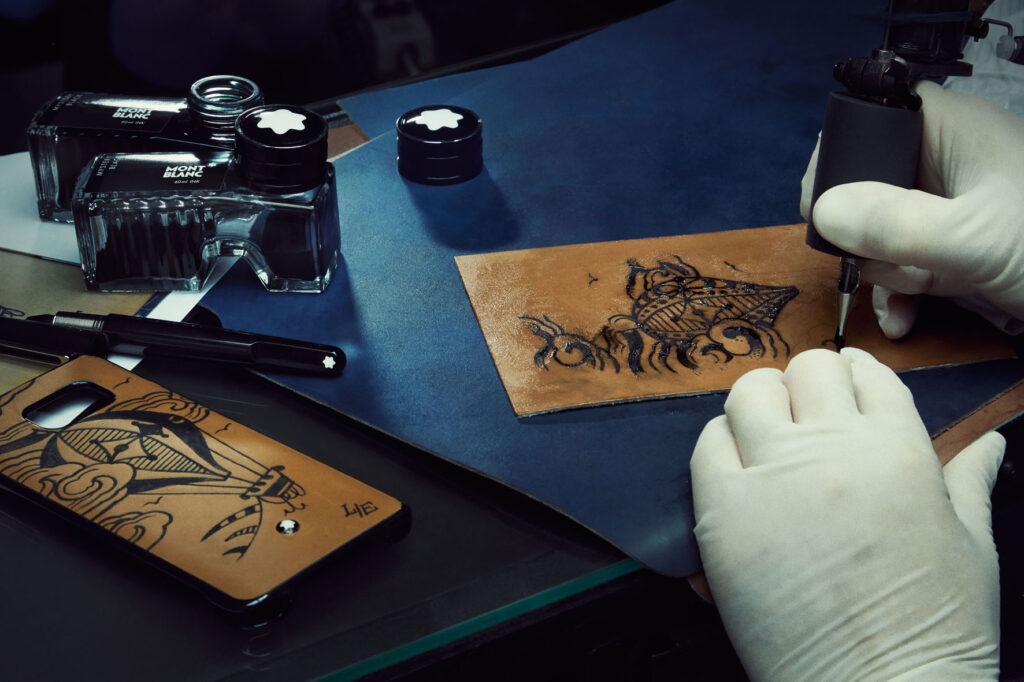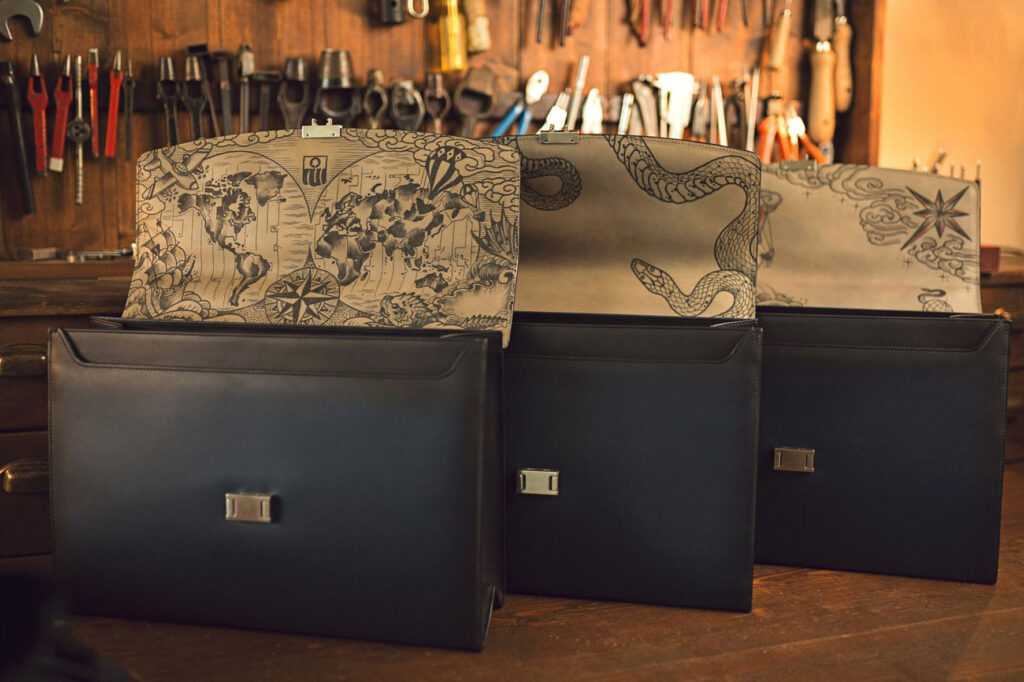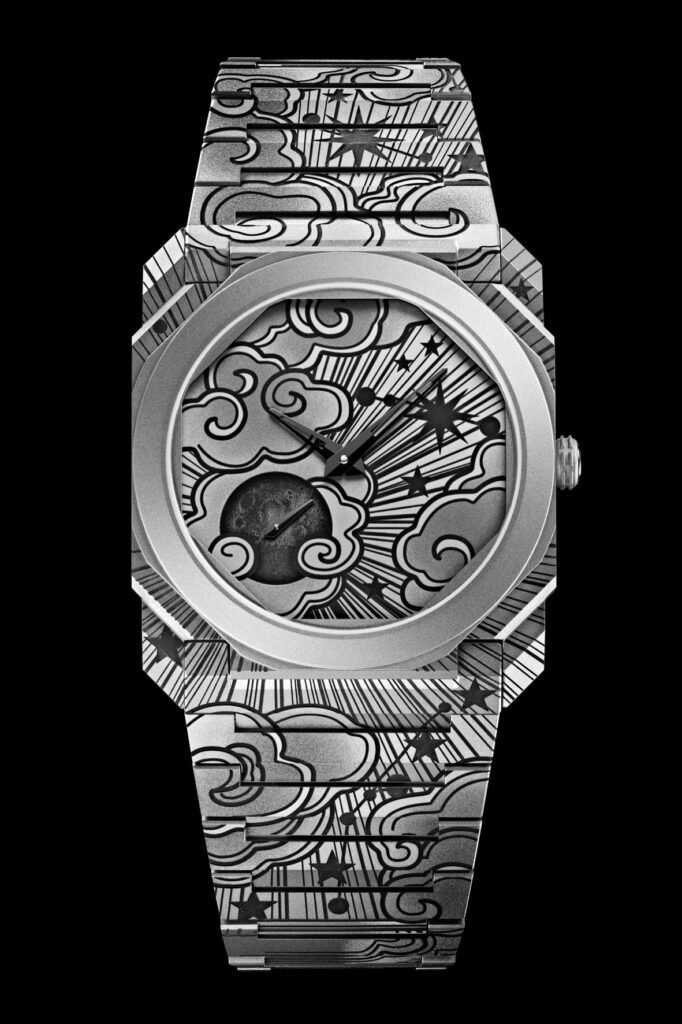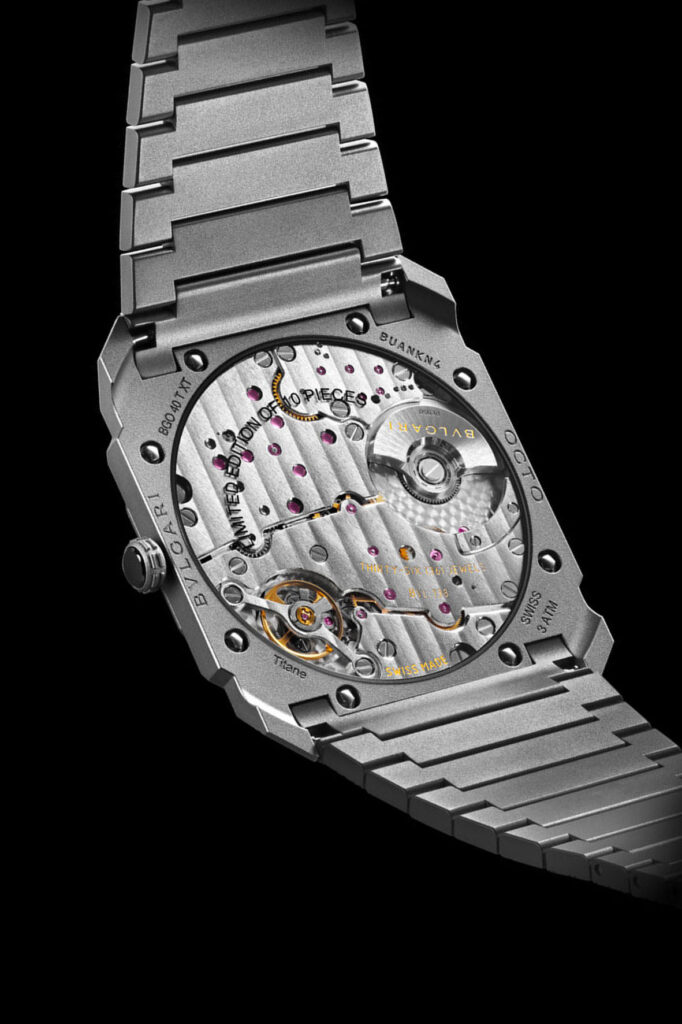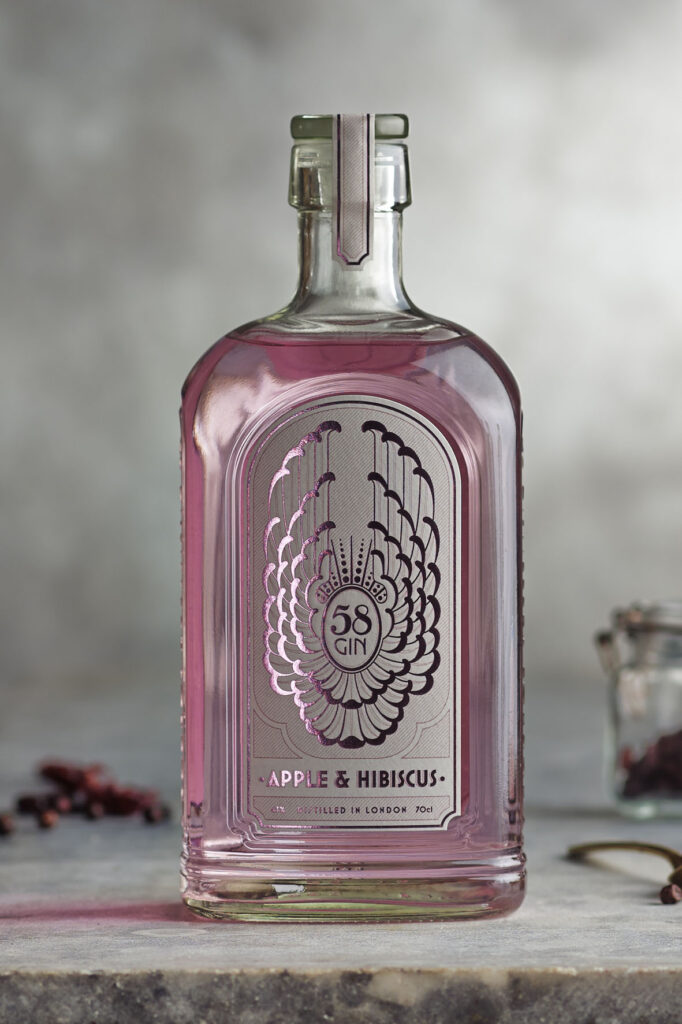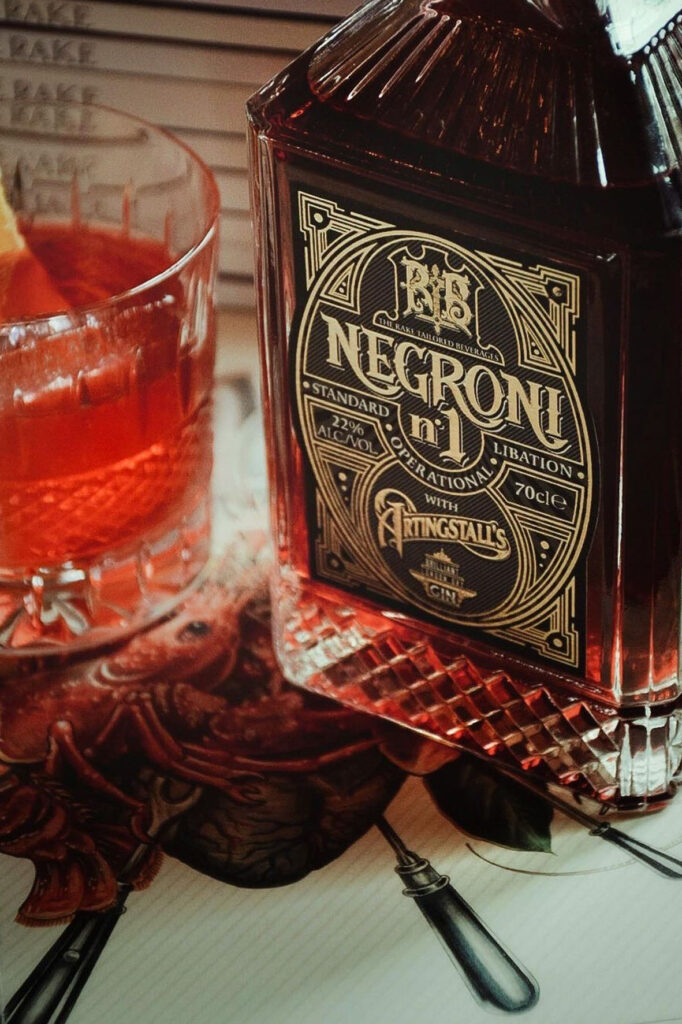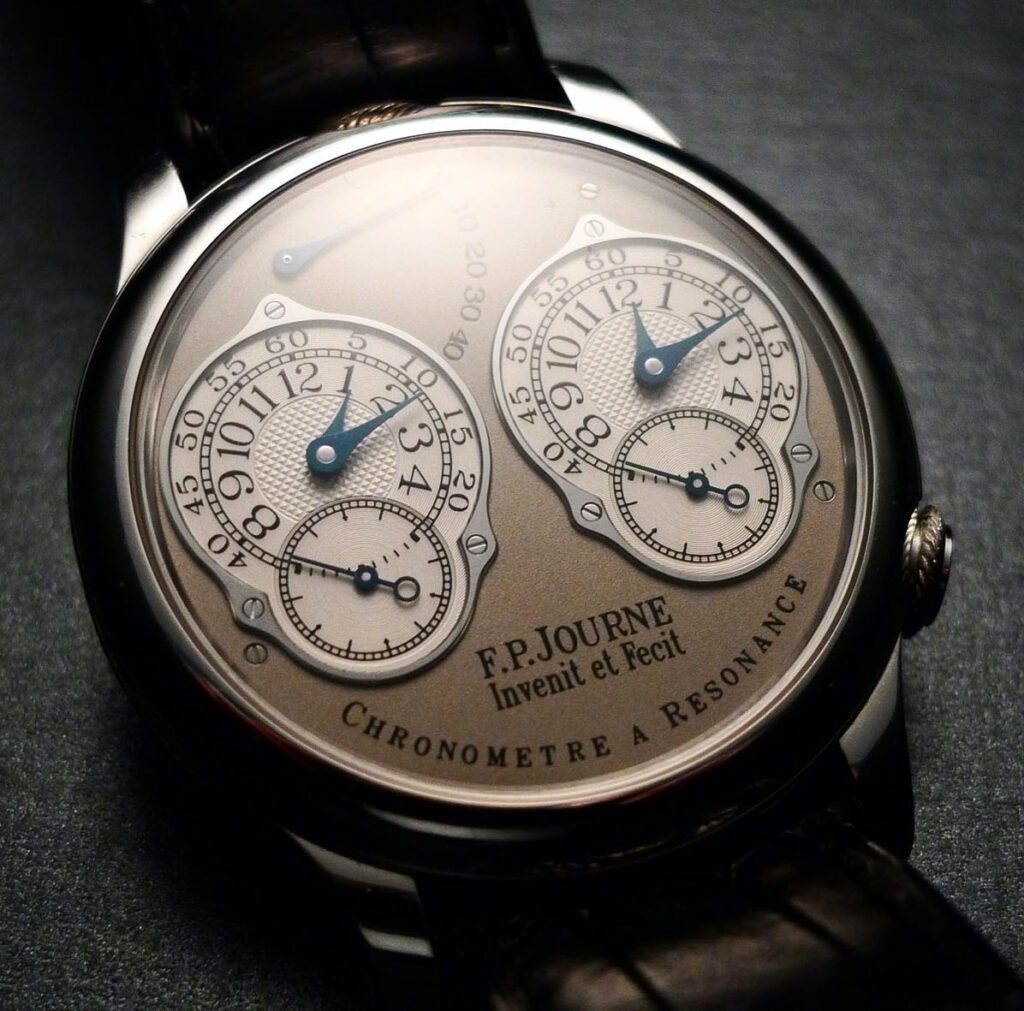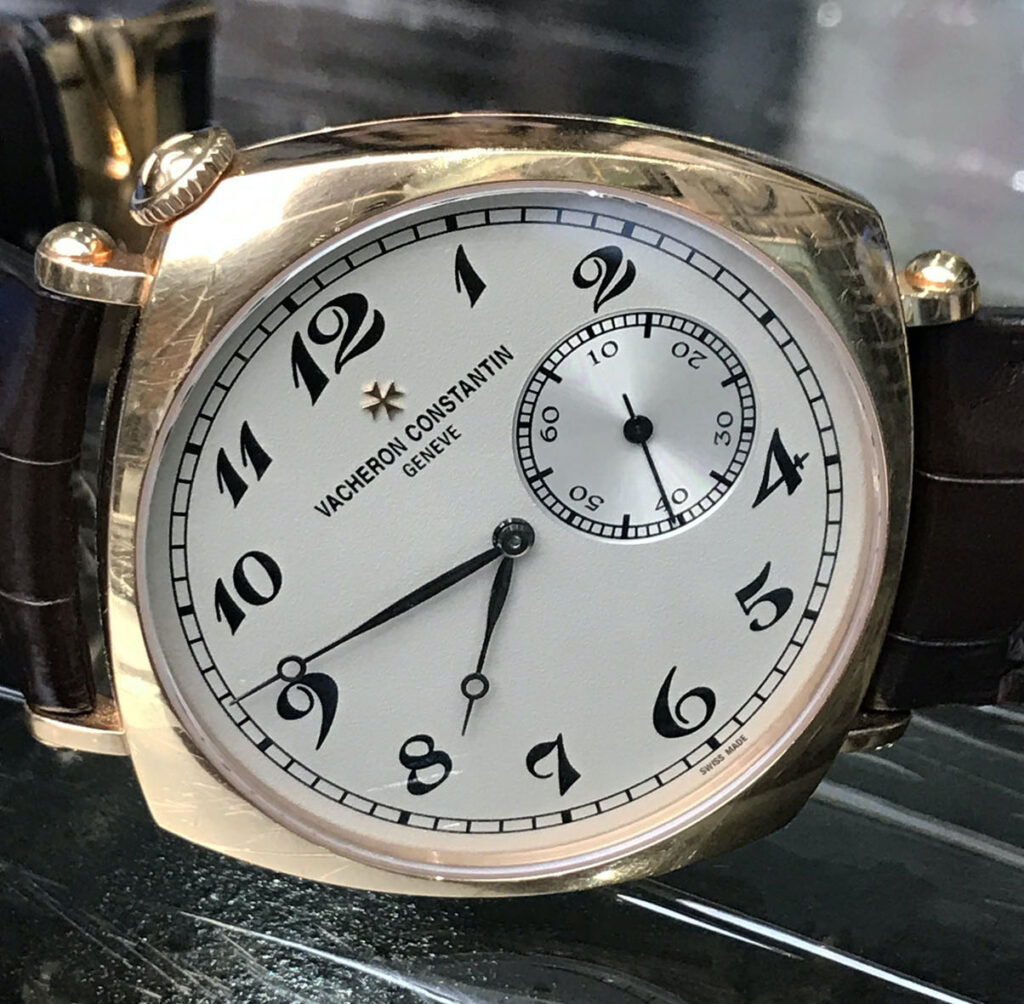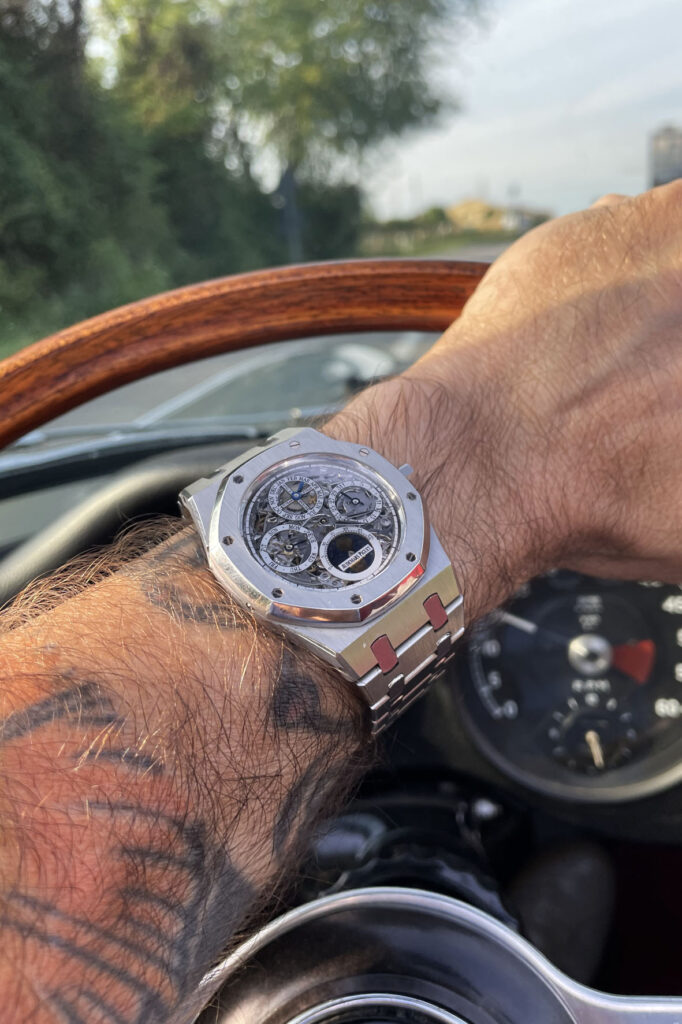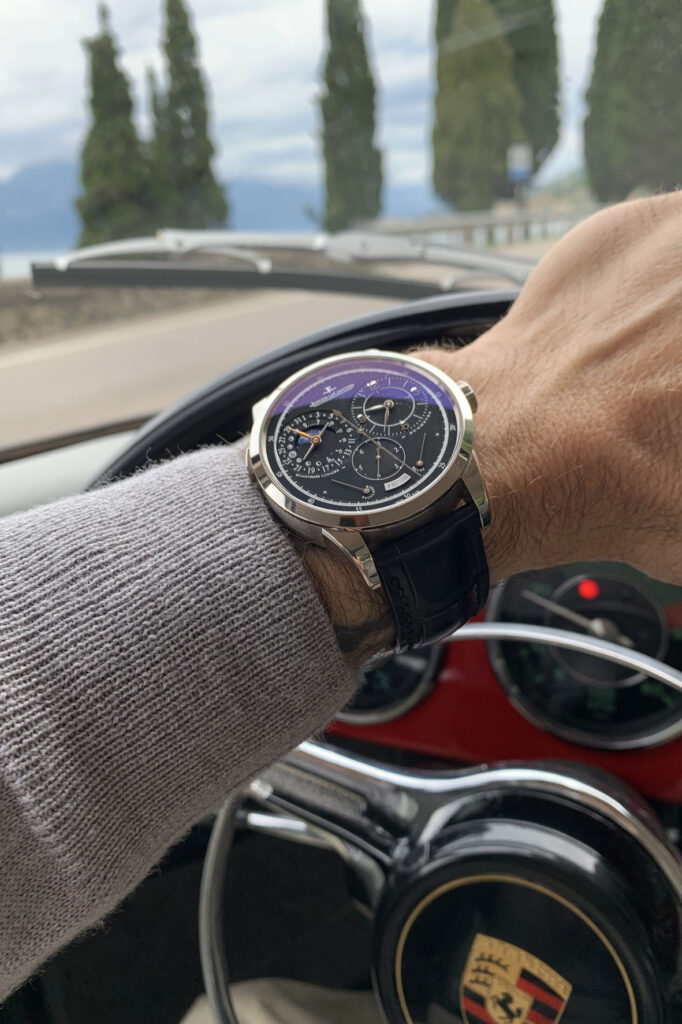Mo Coppoletta: the Italian designer who first conquered London, and then the watchmaking world 
20 July 2022It just happens like this. That one becomes a major player in his field. And with a bit of luck he also becomes famous for what he does. It is rare, but not extremely rare, and in fact, in Italy there’s the saying: “one in a thousand…” This is what happened to Mo Coppoletta, born in Verona in 1971, who has been dividing his time since 1997 between London and his beloved Bardolino, the Veronese shore of the equally adored Lake Garda. In fact, his passion for tattooing, together with talent and perseverance, have made him internationally famous with his London shop at Exmouth Market: since 2003 “The Family Business Tattoo” has been an absolute benchmark for world enthusiasts. Then something even rarer happens to some. Talent, intuition, willpower, creativity and who-knows-what-else make them become number ones even in fields that are not exactly theirs. And that’s what has always happened to him, Mo Coppoletta, who has gone from being a tattoo artist to becoming a creativity reference – with Coppoletta Designs – for many other industries as well: from automotive (Rolls Royce) to fashion (Turnbull & Asser); from accessories (eyewear with Maison Bonnet and Montblanc with the “Secret Adornment” project, and Samsung covers) to the drink industry (Harry’s Bar, Gin 58, Olivia Gin, Italicus Rosolio and Negroni for The Rake), etc.; to our beloved watchmaking – with collaborations of the highest level: above all for the wonderful Octo Finissimo Tattoo Aria with Bulgari and Laurent Picciotto of Chronopassion Paris.
How does one become Mo Coppoletta?
It is the sum of my life and my family’s sensibility: my father was a passionate antiques dealer and my mother, with equal passion, was a tailor. My sensibility for beautiful things and certain aesthetic lines comes from my childhood. In addition, my taste has been greatly influenced by the fact that I am Italian.
Why did you leave Verona for London?
For a professional tattooist, in 1997 London had far greater prospects than Italy. It was a mandatory stop because tattooing there was experienced differently, in a much more international dimension. As they say in these cases: London was my destiny.
And how do you see Italy?
Italy is my homeland. It is the country I adore and it is also the most fascinating country in the world. But today, the taste for beauty has been lost in Italy. We only save ourselves because our country remains a wonderful place. From the landscapes to our unique historical heritage, to the extraordinary tourist resorts. However, Italians – I mean ordinary people – no longer feel the need for beauty and, with rare exceptions, for well-made things. And they are seriously biased. There are countries that have no history. Here instead, we have traditions but have abandoned them. That said, when I can, especially in the summer, I spend as much time as possible in Italy. I am from Verona. My parents live in the countryside and I love Bardolino. Lake Garda is wonderful in its whole: the Brescia part is very romantic and the northern region, Trentino, is also fabulous. You look at the lake, the cypresses and the olive trees, and inspiration immediately comes.
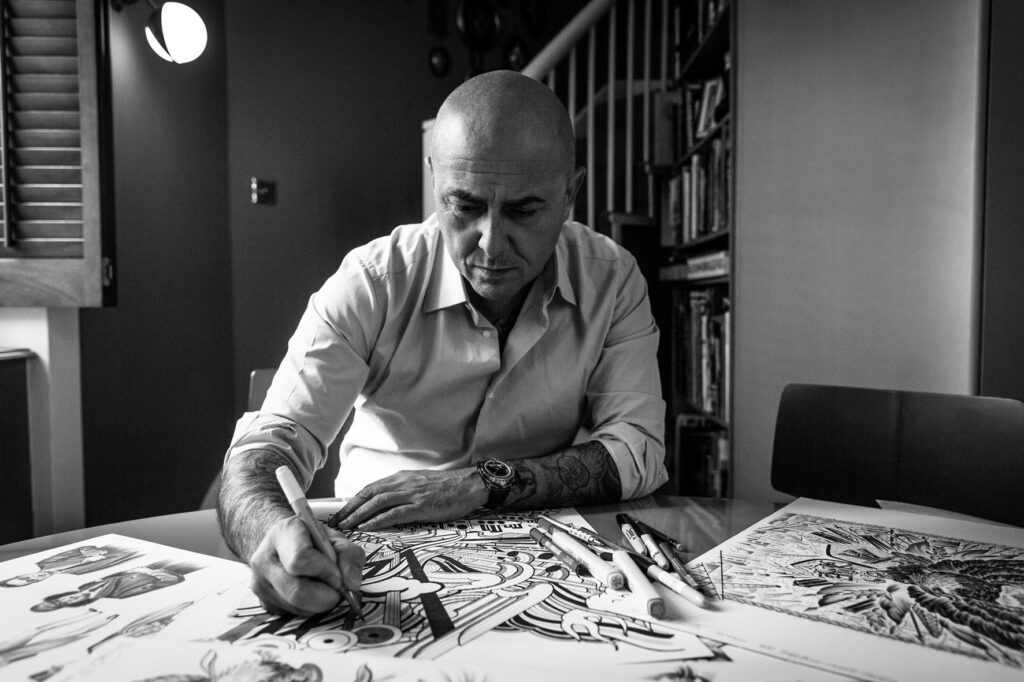
So can we forget about the Marcello Mastroianni-like men promoting “Italianness” throughout the world as an example of prestige?
Well, there are no more Mastroianni’s, but there are plenty of Italians around the world who represent excellence in many areas. The only hope Italy has to get back on its feet as a country is to bring home the great Italians who left. Doing this requires a different, incentivizing kind of policy making. And a leadership moving with the times. A lighter bureaucracy. And we need to push technology, to ‘unbureaucratize’ it. In London, just to give an example, you can buy a house with your cell phone. In Italy it’s already a big deal if you are able to send an e-mail to the public administration. Italian excellence must return to Italy. But then Italy should know how to welcome those people and make the most of them, because one thing must be reiterated: Italians, certain Italians, remain the best in the world.
How was your tattooing passion born?
In the early 1990s, I would say by chance, by temperament or destiny. I loved and still love music, motors (especially Italian scooters, the Lambretta above all, and in recent years classic cars), the United States of America, graphic art, and watches. At the time, in the early 1990s, we were in the midst of a tattoo resurgence, and I surfed that wave, enjoying that extraordinary moment. Because I’m someone who, when I fall in love with something I completely immerse myself in it. In London I devoted myself heart and soul to tattooing.
Let’s come to watches. When did your passion start and how did you come to collaborate with watch brands?
As a young man, as indeed almost all Italians at the time. I devoted myself to something else until about fifteen years ago, when the passion re-exploded overwhelmingly and, in only a few years I made up for lost time by frequenting Switzerland and the world of watchmaking assiduously. Conceptually, I do not respect those who buy a watch based on the name on the dial or the trend of the moment. I value the beauty of the piece. I value the history of the maison. I value the appeal of a watch. So, in general, I buy them because I like them without their rarity into consideration – as perhaps happens on the vintage market, a segment that doesn’t particularly appeal to me. So I started to buy the watches that most caught my attention. Among them: Lange & Söhne Grand Lange 1 in platinum; Jaeger-LeCoultre Duometre Chronographe; Journe Chronometre à Resonance; then the DB25L Starry Sky and the DB28 from De Bethune, a brand that has best symbolized the right relationship between classicism and innovation over the past twenty-five years; Audemars Piguet Royal Oak Perpetual Calendar Skeleton, Vacheron Constantin 1921, Patek Philippe 5070, and some unique pieces from Cartier. Then, with some luck, I started consulting for different brands; some have come out and many more will come out in the future. Watchmaking has been a good companion for the last 15 years. The first collaboration was with Romain Jerome for the ‘A Sailor’s grave’ model.

Of course, I am very proud of the Octo Finissimo Tattoo Aria, and the collaboration with Bulgari and Laurent Picciotto may still hold unexpected surprises. Then two Mo Coppoletta Limited Editions, each of 26 pieces, with S.U.F Helsinki by Sarpaneva;
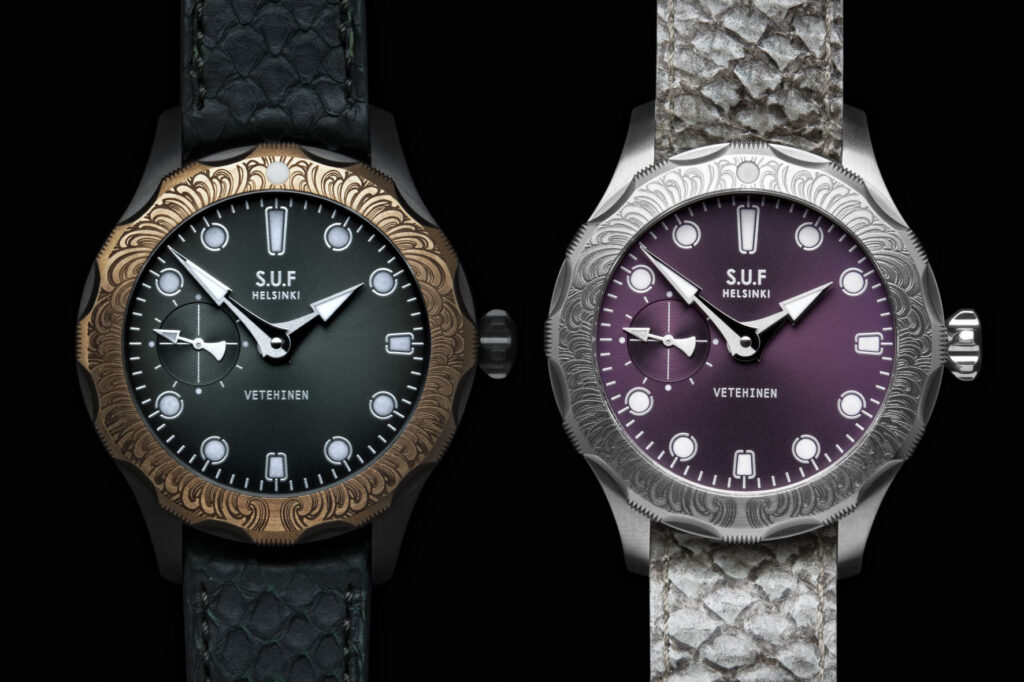
I have made straps for Panerai; I have designed a Philippe Dufour jewelry piece that will probably come out in the near future; and with Luca Soprana we have a number of consulting projects for different watch brands of different targets, including a really amazing super-complicated and a simply delightful jumping hours.
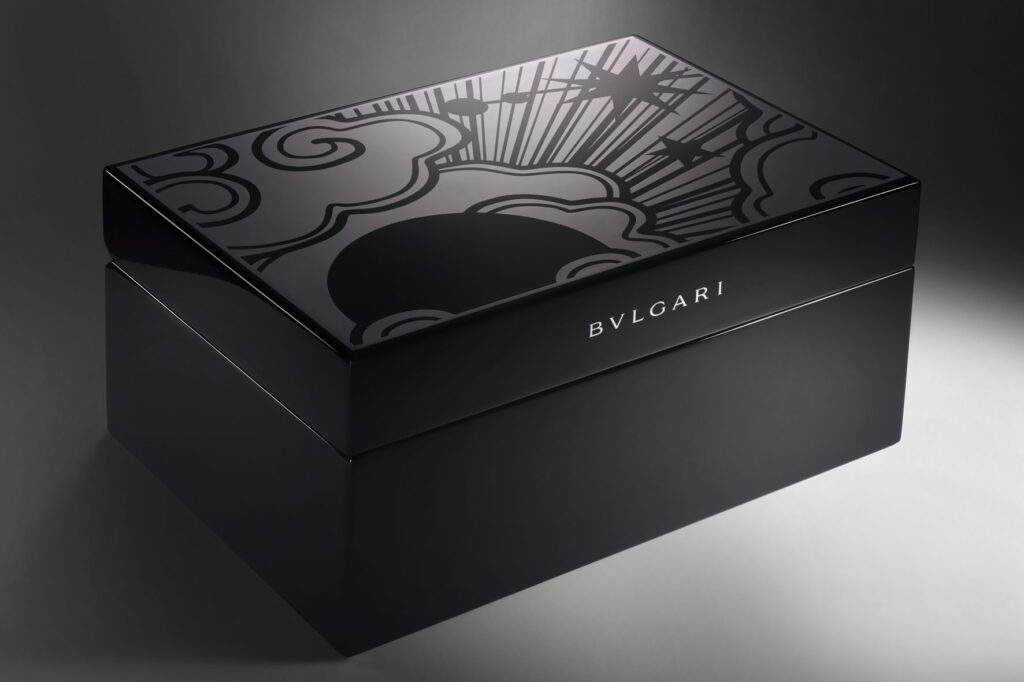
So, ‘when you grow up,’ do you aim to diversify your business?
By now, collaborations with the drink industry, watchmaking and interiors are cornerstones of my work. I do a lot of ‘brand identity’ and ‘rebranding,’ moving between automotive and fashion. Without forgetting of course my origins as a tattoo artist. But I must tell you that if I get the chance, I still have a lot to give in the design world: I think, for example, of certain merchandise in the world of interiors and furnishings. I believe a lot in studying. And practice. Shortcuts do not belong to me. Minimalism is so fashionable because it is the perfect way to hide shortcomings. But I believe that, with intellectual honesty, one can dedicate himself or herself to minimalism only after having given so much in maximalism, where you can see if s/he has studied and has talent. As in: two marks alone are not enough, with only two splashes on a canvas it feels like you are cheating me! Another great love of mine is graphic and decorative art, from Victorianism to advertising art between the 1940s and 1960s. My appreciation in works – of art and objects, right down to clocks – must reflect a great deal of technique, quality and talent, which, together with creative ideas and sensibility, are the perfect mix. And in this sense I also hope that my work always holds these same ingredients.
Mo, during these years in the watchmaking world, who are the people that have most fascinated you and made you fall in love with watches? Is there anyone in particular who has really impressed you?
Many people have real talent, others less so, as in all domains. I think the team that fascinated me most was the one composed of Denis Flageollet and David Zanetta, in short, the first phase of De Bethune; because I have rarely not been fascinated by one of their creations. In my opinion they reached one of the highest points in modern watchmaking. Then, Claude Sfeir, a unique person who showed me a true passion for watches and whose enthusiasm is simply mind-blowing. And as fate would have it, I met him at a De Bethune dinner.
What do you look for in a watch, and how much does the technical part matter to you?
Heart or appearance? Both, as long as it is in balanced and coordinated doses. For example, some watches are not appreciated for their technical value, but they certainly must have an adequate dose of it. I mean of technique and of finish. Others are appreciable technically but are not strong enough on aesthetics. So let’s say that each watch should be appreciated in a context of the right balance between technique and aesthetics, based on the meaning that it wants to bear. Certainly, pure technique unsupported by the rest makes me quite cold, like cold guitar virtuosity. And, anyway, between the two – as in other areas – aesthetics are the most seducing part.
A lot of modern watches and independent brands appear in your collection, but what is your opinion on the vintage segment? Does it potentially fascinate you? Have you ever thought about buying a vintage watch?
I have never been fascinated by the mainstream vintage looks of the last two decades, that is Rolex and certain Pateks. Now the wind has changed, I have always liked 1930s and 1940s watches with sinuous and complex cases, unimaginable today. Like certain old Vacherons, Audemars and Pateks of that era. Even some Omegas. Above all, vintage is a universe that requires study and true knowledge; I don’t think I have enough of it to make an exhaustive evaluation.
DWith your collaboration with Dufour we can say that you’ve reached the most revered name. Have you ever thought about designing a watch from scratch or, even better, a collaboration for a product completely made in Italy?
I don’t know if you have any spies … but as they say, ‘Stay tuned.’
As a designer, what do you think is missing in the watchmaking world?
It depends. The big brands lack almost everything! In fact, how much longer can they rely on historical models!?!! They lack the will and courage because marketing and the ‘corporative way’ have stifled any creative instinct. Instead, in independent watchmaking there is more space, indeed, it is a good thing that it is finally appreciated even commercially because without the independents there would be nothing or little that could be saved today. Because, as I said before, the marriage of technique as a function of aesthetics and vice versa is the rule I respect most.
Let’s conclude with a wish or a personal utopia: do you already know what your next watch will be? And is there a potential ‘Exit Watch’ for you?
My wish list hasn’t changed in ten years! That says a lot about the creative state of the industry! My Exit Watch will be the next one! Which will be followed by another Exit Watch! And so on and so forth!
By Michele Mengoli


